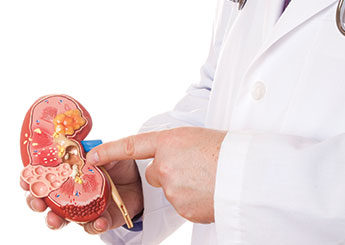Most obese young adults unaware of chronic kidney disease risk: study

Photo: ericsphotography/iStockphoto
Bronx, NY – A majority of young adults with abdominal obesity are not aware they face an increased risk of developing chronic kidney disease, according to a study from the Albert Einstein College of Medicine.
Using data collected between 1999 and 2010 from the National Health and Nutrition Examination Survey, researchers looked at nearly 7,000 non-pregnant young adults between 20 and 40 years old. Men with a waist measuring at least 40 inches and women with a waist measurement of at least 35 inches were examined. The study participants self-identified as non-Hispanic white, non-Hispanic black or Mexican-American.
Results showed that 11 percent of obese Mexican-Americans had albuminuria – an elevated level of the protein albumin in their urine, and an indicator that their kidneys weren’t functioning normally. About 6 percent of whites and blacks showed elevated albumin levels, said the researchers, who also wanted to see if race or ethnicity linked abdominal obesity with chronic kidney disease.
Researchers recommend that health care providers consider obesity an independent risk factor for chronic kidney disease and test for kidney damage when evaluating obese young adults. “Even though chronic kidney disease typically manifests in older people, the disease can start much earlier but often is not recognized early on,” study leader Michal L. Melamed said in a press release. “Because treatment options for CKD are limited, prevention is the best approach for those at risk. A healthier lifestyle in young adults will go a long way toward promoting kidney health later in life.”
An estimated one out of three adults in the United States is at risk of developing chronic kidney disease, the study states.
The research was published May 25 in the journal PLOS ONE.
The Centers for Disease Control and Prevention states that between 1980 and 2012 obesity has increased to 18 percent among children ages 6 to 11, and nearly 21 percent among adolescents ages 12-19.
Post a comment to this article
Safety+Health welcomes comments that promote respectful dialogue. Please stay on topic. Comments that contain personal attacks, profanity or abusive language – or those aggressively promoting products or services – will be removed. We reserve the right to determine which comments violate our comment policy. (Anonymous comments are welcome; merely skip the “name” field in the comment box. An email address is required but will not be included with your comment.)

